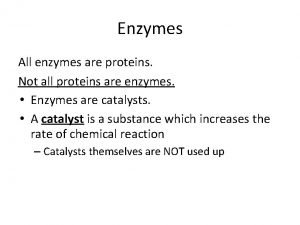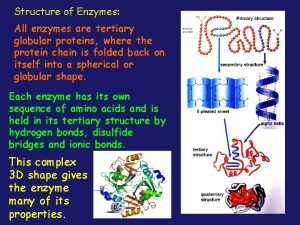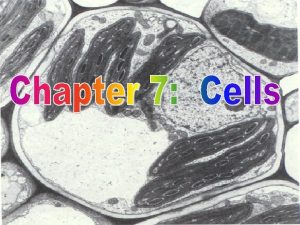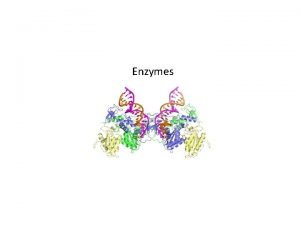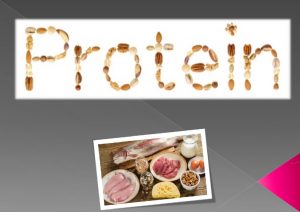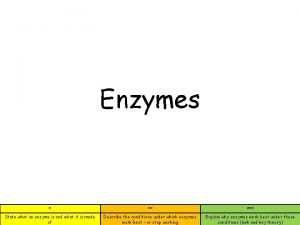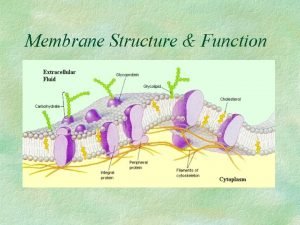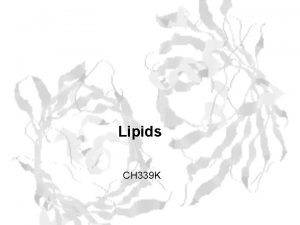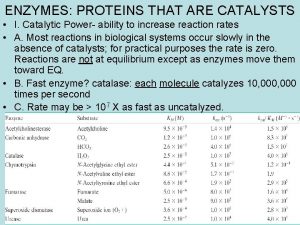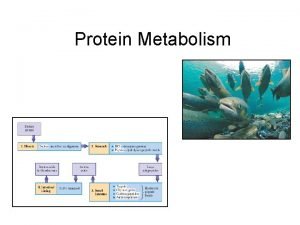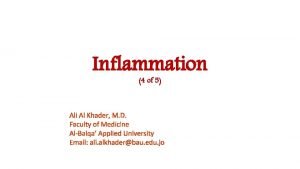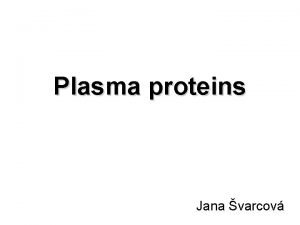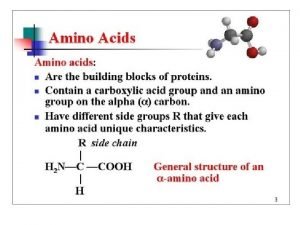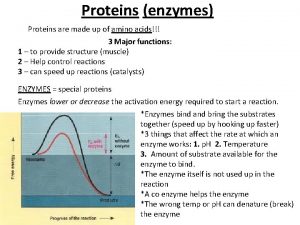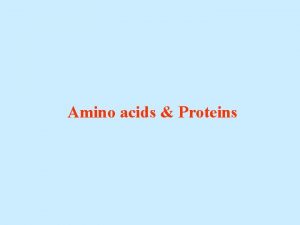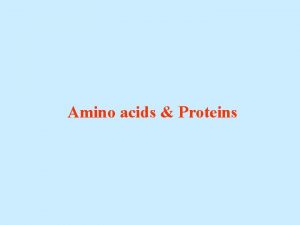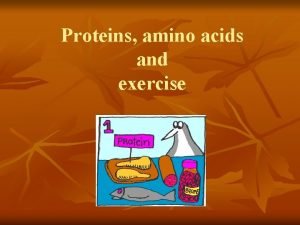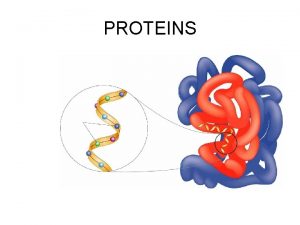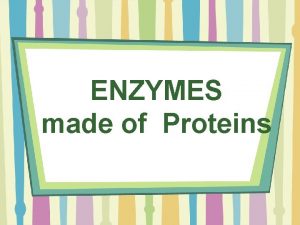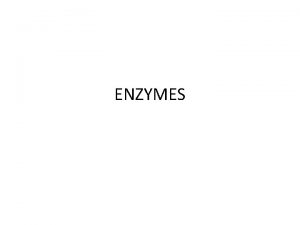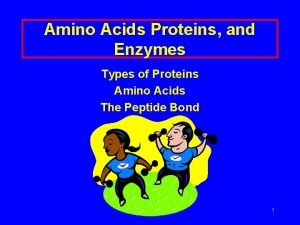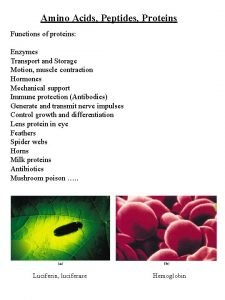Enzymes Enzymes Enzymes are proteins made of amino
















- Slides: 16

Enzymes

Enzymes • Enzymes: are proteins made of amino acids. -Catalyst: they speed up chemical reactions & lower the activation energy. the -Reusable: remain unchanged after reaction for a -specific: there is a perfect enzyme certain substrate

Are Enzymes reusable? Yes or NO

Enzymes are…. . A. Nucleic Acids B. Carbohydrates C. Proteins D. Lipids

Enzymes • 3 D shape • can be destroyed & denatured (change shape) with extreme changes in p. H & temperature • have active sites = places where substrate (food & waste) molecules attach


Examples of Enzymes Catalase breaks down hydrogen peroxide (waste produced in cells) into water and oxygen 2 H 2 O 2 ----> 2 H 2 O + O 2 milk Lactase breaks down lactose in Protease breaks down proteins Lipase breaks down lipids

How Enzymes Work? • Active sites on enzymes = places where a specific substrate binds • Enzyme-substrate complexes form (when substrates attach to active sites on the enzymes) to break apart or put together substances at a fast rate • E+ S ES E +P

What are active sites?

Two Model of Enzymes 1. lock & key model → substrate & the enzyme fit together perfectly 2. induced-fit model →enzymes change shape slightly to accommodate the substrate

Lock & Key Model

Induced-Fit Model

Factors Affecting Enzyme Action • Temperature – enzymes work best at certain temperatures (– 37 o. C is best for human enzymes in the body) • p. H – enzymes work best at certain p. H; basic, neutral, and/or acidic environments ex. ) Amylase in saliva at p. H 7, Pepsin in the stomach at p. H 2 -3, Trypsin in the intestines at p. H 9

Temperature reaction rate human enzymes 37° temperature What’s happening here? !

p. H intestines trypsin What’s happening here? ! reaction rate stomach pepsin 0 1 2 3 4 5 6 p. H 7 8 9 10 11 12 13 14

Other Factors Affecting Enzyme Action • Substrate & enzyme concentrations – how fast reactions take place depends on how much of the substrate & enzyme is available. • Coenzymes – helpers such as vitamins & minerals
 Mikael ferm
Mikael ferm Amino acids are joined together in proteins by
Amino acids are joined together in proteins by Not all enzymes are proteins
Not all enzymes are proteins All enzymes are globular proteins
All enzymes are globular proteins Onion cell parts
Onion cell parts What are enzymes made of
What are enzymes made of What is made of amino acids
What is made of amino acids What are enzymes
What are enzymes What are enzymes made of
What are enzymes made of Cummings
Cummings Integral and peripheral proteins
Integral and peripheral proteins Proteins with catalytic power are called
Proteins with catalytic power are called Protein digestion
Protein digestion Al khader proteins
Al khader proteins Food source of nucleic acids
Food source of nucleic acids What cell organelle is like lysol spray cleaning the cell
What cell organelle is like lysol spray cleaning the cell Globulin function
Globulin function


